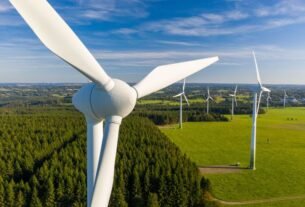Overview & Comparative Insights
On July 31, 2025, SBI Capital Markets released its thematic research, Charging Indian BESS With Global Ideas, which benchmarks India’s Battery Energy Storage System (BESS) strategy against China’s mature deployment and supply chain dominance
Key Highlights from the Report
Indian BESS Market Snapshot
While global ESS battery production exceeded 345 GWh in 2024, India contributed nearly zero domestic LFP battery output, highlighting a glaring supply gap.Technology & Supply Chain Shortfall
India’s limited LFP manufacturing capacity is tied to domestic policy focus under the Advanced Chemistry Cell (ACC) PLI scheme—primarily aimed at EV batteries—with minimal allocation to standalone ESS applications.Revenue Models: Capacity vs. Ancillaries
In India, over 60% of BESS project revenues stem from capacity payments under availability-based pricing. In contrast, Chinese models rely more on ancillary services and energy arbitrage, enabling developers to “stack revenues” and reduce subsidy dependence.Charging Reforms & Market Evolution
India’s shift towards tariffs based on energy (Rs/kWh) instead of traditional fixed-capacity payments marks a new era of load-based contracts, mirroring Chinese innovations in demand-responsive BESS procurement.Ecosystem Development & Indigenization Strategy
The report sees scaling of BESS as central to nurturing an entire domestic supply chain—from cell manufacturing and component sourcing to second-life battery use—but warns India may rely on imports well into 2030 without deeper upstream integration
Broader Market Projections
Massive Expected Scale-Up
SBICAPS forecasts India’s BESS capacity to rise 12-fold to ~60 GW by March 2032, with investment flows totaling around ₹3.5 trillion (~USD 42 billion). Up to ₹80,000 crore (~USD 10.5 billion) is expected to target upstream cell capacity expansion.Policy & Infrastructure Push
Recent reforms—including interstate transmission charge waivers, energy storage obligations, statutory recognition of storage projects, and improved battery recycling regulations—create a more enabling ecosystem for private deployment and investment.Improving Economics & Regulatory Shift
Battery pack and cell prices have fallen dramatically over the past decade (up to ~80%), improving levelized cost metrics. Concurrently, the shift to load-oriented contracts like FDRE (Flexible & Dispatchable Renewable Energy) and RTC (Round-the-Clock) is redefining grid planning strategy.
.
✅ Why This Report Matters
The SBICAPS study is timely and strategic—it not only compares India’s ESS trajectory to global leaders but also specifies how structure, policy alignment, and technology adoption can accelerate BESS deployment. Key takeaways:
India must ramp up domestic LFP battery production to reduce strategic dependence.
Expanding revenue stacking opportunities—capacity, arbitrage, and ancillary services—will bolster financial viability.
Evolving tender structures (energy-charged tariffs, load-based contracts) align India with advanced global markets.
Policy support, infrastructure reforms, and financing mechanisms collectively position BESS as a key pillar in India’s clean energy roadmap.
.
📌 Summary Table
| Aspect | Current Situation / Insight |
|---|---|
| Domestic LFP Production | Minimal—India relies heavily on imports |
| Revenue Sources | Capacity payments dominate (India), ancillary stacking better in China |
| Tariff Structure | Shift from Rs/MW-month to Rs/kWh energy-based contracts |
| Forecasted Capacity | ~60 GW by March 2032 |
| Ecosystem Growth Potential | ₹3.5 trillion opportunity (~42 billion USD) |
| Policy Drivers | PLI scheme, transmission waivers, regulatory recognition |




